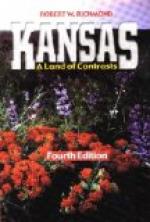The best American comic paper is Life, which is modelled on the lines of the Muenchener Fliegende Blaetter, perhaps the funniest and most mirth-provoking of all professedly humorous weeklies. Among the most attractive features are the graceful and dignified drawings of Mr. Charles Dana Gibson, who has in its pages done for American society what Mr. Du Maurier has done for England by his scenes in Punch; the sketches of F.G. Attwood and S.W. Van Schaick; and the clever verses of M.E.W. The dryness, the smart exaggeration, the point, the unexpectedness of American humour are all often admirably represented in its pages; and the faults and foibles of contemporary society are touched off with an inimitable delicacy of satire both in pencil and pen work. Life, like Punch, has also its more serious side; and, if it has never produced a “Song of the Shirt,” it earns our warm admiration for its steadfast championing of worthy causes, its severe and trenchant attacks on rampant evils, and its eloquent tributes to men who have deserved well of the country. On the other hand, it not unfrequently publishes jokes the birth of which considerably antedates that of the United States itself; and it sometimes descends to a level of trifling flatness and vapidity which no English paper of the kind can hope to equal. It is hard—for a British critic at any rate—to see any perennial interest in the long series of highly exaggerated drawings and jests referring to the gutter children of New York, a series in which the same threadbare motifs are constantly recurring under the thinnest of disguises. And occasionally—very occasionally—there is a touch of coarseness in the drawings of Life which suggests the worst features of its German prototype rather than anything it has borrowed from England.




